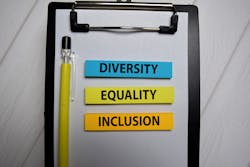Sincerely Stefanie: Disproportionate Circumstances Call for Inclusive Measures
I recently had the opportunity to interview Marc Morial, the former mayor of New Orleans between 1994 and 2002.
He currently advocates for economic and social justice as the president of the National Urban League, a nonpartisan civil rights organization. His insight was featured in the EHSToday.com article, “Underrepresented Groups Poised to Suffer More During Pandemic and Recession.”
Morial explains, “These conditions affect all Americans, but they disproportionately affect people who are poor, and that means also people who are African-American and Latino because of the nation’s long legacy of racial exclusion and people who historically have not had access to health insurance, doctors or hospitals as easily as others. We want to shine a light on this because as we begin to pivot as a nation toward trying to get back to normal, people have to understand that this challenge that we face is self-induced.”
The article features Morial’s insight into exactly why communities of color are vulnerable to the novel coronavirus and its aftermath. It says:
The novel coronavirus, which has caused severe economic strain across the globe, has widened the cracks of adequate healthcare access and secure jobs to underrepresented groups. With the majority of American children not in school coupled with the skyrocketing unemployment rate, the issues among the nation’s poorest are exacerbated.
“What has become clear from the data is the pandemic is hitting communities of color the hardest,” Morial says. “COVID-19 is affecting every single community, but what it’s disproportionately affecting when it comes, particularly to the death rate, are communities of color – African-Americans and Latinos.”
There’s no denying that historically underrepresented demographics suffer more based on socioeconomic factors. Each one of us feels the effects of the current public health crisis in different ways, but for many it is far more devastating. Some of us have the luxury of working from home. Others are considered essential workers. Some will suffer significant financial loss as the economy fluctuates. However, the inequalities plaguing these communities already existed beforehand.
“This country’s institutional discrimination has had a huge impact on who lives and who dies amid this pandemic,” says Marcy Goldstein-Gelb, co-executive director of the National Council for Occupational Safety and Health (National COSH).
Many American citizens are without Internet access needed to obtain crucial information from agencies such as the Centers for Disease Control and Prevention, to access unemployment assistance or to even make medical appointments. Microsoft’s research released in 2019 indicates up to 162.8 million people are not using the Internet at broadband speeds.
Cleveland, Ohio-based journalist Afi Scruggs writes for Eye on Ohio:
Digital exclusion consists of a combination of deficiencies: lack of access to affordable networks and hardware; lack of literacy or skills to navigate, consume, and produce content in the digital sphere; and finally, lack of access to troubleshooting support when broadband or devices break.
The reality of digital exclusion means many are isolated at a time when the Internet enables daily life. From GPS-enabled cars to Bluetooth kitchen appliances to virtual medical consultations, digital access determines tasks from the mundane to the crucial.
With varied social and cultural challenges as well as inequalities, safety professionals have an added level of complexity when it comes to making sure each worker is effectively trained and informed of any changes to safety processes.
Recent data from the Bureau of Labor Statistics has shown an 8.9% rise in preventable deaths from sudden workplace trauma from 2014 to 2018. Fatalities increased to 5,250 in 2018 from 4,821 in 2014.
Employees of color are particularly at risk. The same five-year period shows a 19.5% increase in deaths among Latinx workers and 29.5% for African-American workers.
It’s more important now than ever to lead workers through these rapidly-evolving times safely, to listen to their concerns and to build them up one by one. It will take endless hours coupled with the ability to pivot, a listening ear and creative solutions to ensure the right systems are in place to effectively battle not only the pandemic but to squash inequalities in the workplace.
If it wasn’t stressful or hard before, the pandemic certainly is testing safety leaders now. But, if there’s anything I’ve learned from writing for EHS Today, it’s an EHS professional’s sincere dedication to each individual worker that will drive the change needed in the workplace and society to overcome these obstacles and make sure every worker is treated with respect, dignity and equality whether they’re on the job or at home.
About the Author

Stefanie Valentic
Stefanie Valentic was formerly managing editor of EHS Today, and is currently editorial director of Waste360.
